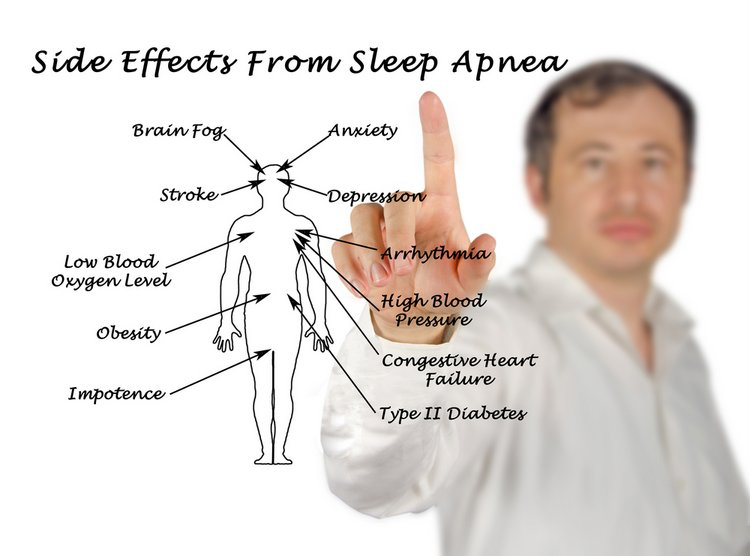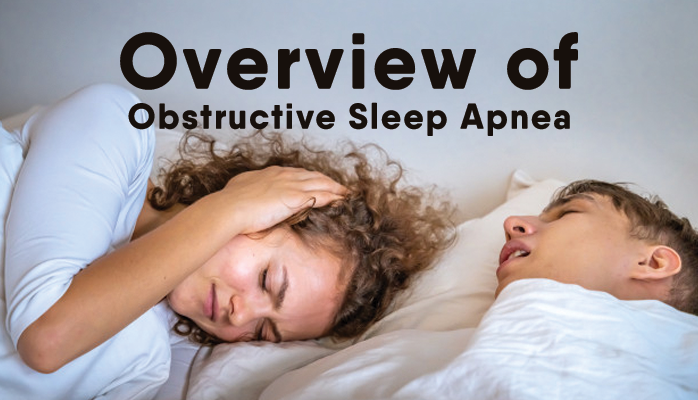What is Obstructive Sleep Apnea (OSA)
Obstructive sleep apnea is a potentially serious medical condition and sleeping disorder that can lead to severe sleep deprivation. OSA causes you to repeatedly stop breathing throughout the night, anywhere from 5 to 30+ times per hour. Each time you stop breathing you wake up to stop start breathing again, however, you may not remember waking up. This can lead to you feeling exhausted after a night of sleep and having no idea why. Continue reading to find out more about obstructive sleep apnea.
The reason you stop breathing repeatedly is because your throat becomes blocked. This block can be for a myriad of reasons including the relaxation of your breathing muscles, causing the back of your throat to collapse. This leads to a full or partial airway blockage which causes you to wake up so you can begin breathing again. Each blockage/arousal cycle is called an apnea or apnea event.
What is Mild, Moderate, and Severe Obstructive Sleep Apnea
Obstructive sleep apnea can be divided into mild, moderate or severe depending on the number of apnea events in a night. Mild OSA is 5-14 apneas per hour of sleep, moderate OSA is 15-30 apneas per hour of sleep and severe OSA is 30+ apneas per hour of sleep.
These apneas, and their subsequent arousals, are enough to causes severe sleep deprivation. The risk factors for developing mild to severe sleep apnea are generally similar across the board, although severe sleep apnea may cause more noticeable symptoms, and the treatments may be different.
What are Symptoms of Obstructive Sleep Apnea
Some of the most common symptoms of obstructive sleep apnea are:
- Loud snoring
- Repeated stops in breathing throughout the night
- Restless sleep
- Morning headaches
- Daytime fogginess
- Severe daytime sleepiness
- Chronic irritability
One of the reasons OSA goes unnoticed for so long is because unless you have a bed partner, you are likely not to notice the snoring and repeated interruptions in breathing. Having a bed partner can make identifying a hallmark OSA symptoms much easier.
What are the Risks of Obstructive Sleep Apnea?

Risk factors of OSA are numerous and serious, caused because of chronic sleep deprivation. Some of the main risks are:
- High blood pressure
- Diabetes
- Stroke
- Heart disease
- Depression
- Reduced cognitive performance
- Reduced stress management
- Shorter life expectancy
- Lower quality of life
- Lower performance in many areas of life
How is OSA Treated?
For most cases of OSA CPAP therapy will likely be the prescribed remedy. However, CPAP therapy may be prescribed only after other options are explored [resmed], including:
- Lifestyle changes (eating, drinking, tobacco use, and exercise habits)
- Weight loss
- Changing sleep position
- Medication changes
- Surgery (rare)
Why is this the case? Because mild sleep apnea may be caused by (and therefore naturally preventable) from:
- Being overweight
- Excessive drinking, tobacco use, or poor eating habits
- Sleeping on your back
- Using certain medications
- Not exercising enough
- Anatomy
CPAP therapy is facilitated via a CPAP machine. A CPAP device/machine stands for Continuous Positive Airway Pressure and is the primary component of CPAP therapy and sleep apnea treatment. A CPAP machine is a small, rectangular box with a motorized fan inside and an adjacent humidifier.
Connected to the CPAP device is a flexible tube that leads to a breathing mask. The hose is a lightweight and kept warm in order to reduce condensation. Among other things, too much condensation can lead to sanitation problems like, namely, mold growth. There are also many options for breathing masks to offer custom fit and different styles of mask.
Finally, the primary component in CPAP machines is a small fan inside. The small fan inside delivers gentle, positive pressure through a connected hose to the breathing mask. The result, no more lapses of breathing at night because the positive air pressure keeps your airway open. The pressure can be a little strange at first, but it’s rare that people report any long terms problems associated with it.
If you live in Alaska, and are concerned that you or a loved one has sleep apnea or has already been diagnosed, please consult with our sleep specialists about any questions you have.


